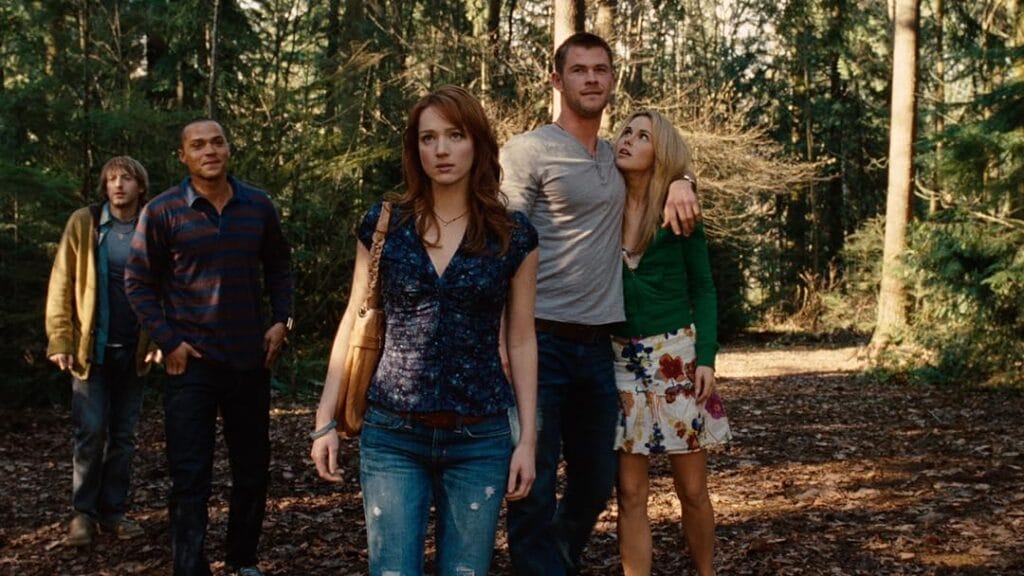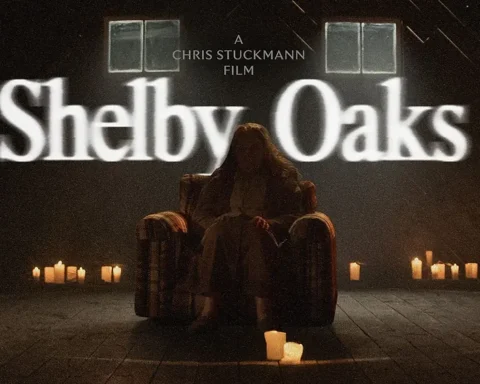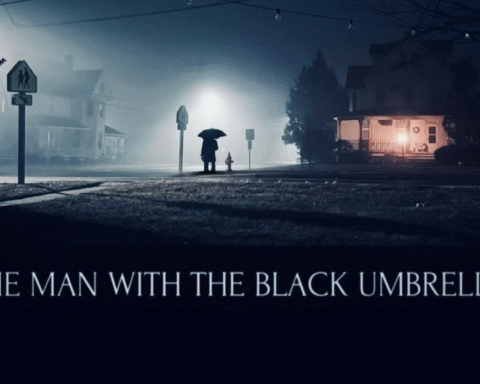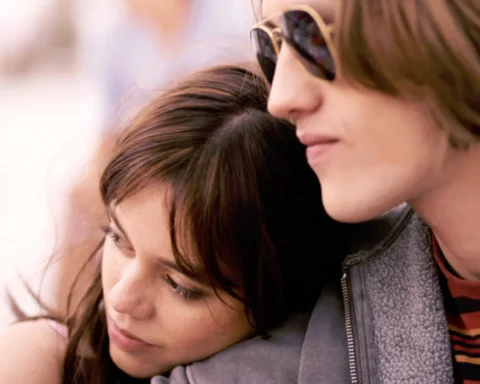Contemporary horror films are a bit like a huge potpourri where various more or less pleasant smells mix together—combinations that we never really wanted to blend. Serial killers, possessed children, psychopathic perverts, runaway nymphomaniacs, jerky zombies, scientific catastrophes, futuristic contaminations… we’ve been served all of these on every table, both hot and cold, seasoned and decaffeinated, spicy or light. We’ve loved some, we’ve hated others, and in the end, we’ve grown tired of them with a sense of bitterness.

This Looks Familiar: If Curt (Chris Hemsworth), Holden (Jesse Williams), Jules (Anna Hutchison), Marty (Fran Kranz) and Dana (Kristen Connolly) resemble the cardboard cut-out college students who prove expendable in so many horror movies — well, that’s intentional.<
Drew Goddard brings us a remarkable UFO of a film, fresh out in French cinemas on May 2, 2012. A film whose form and substance have been both contested, acclaimed, questioned, and criticized by the international press. The controversy stems from the risky elements, full of duality, that Goddard decided to explore in this feature film, armed with nerve and very bold audacity.
Rated 92/100 by the American review site Rotten Tomatoes, there was still doubt in Europe about this film’s power of seduction, knowing that the European audience is often less subtle. The satirical references to the original tradition of horror films are numerous and delightfully dark: we want to believe in the trapdoor from Evil Dead, in Romero’s zombies from Night of the Living Dead, or in the little plot twists of Wes Craven’s The Hills Have Eyes.


Who said “Strip down!”?
The first part of the film introduces us to the small group of young American students we will follow throughout the movie. As mentioned earlier, Drew Goddard decided to use the clichés of horror cinema to his advantage in his “human-scale staging”: the ultra-muscular football player, the sexy blonde who’s borderline brainless, the dark-haired and virgin intellectual, the super handsome guy with overflowing culture, and the wacky stoner. The second part of the film displays a frantic pace that’s hard to believe while the action unfolds! The thunderous entry into this two-dimensional universe offered by the film brings a real breath of fresh air to the genre, showing a slightly mocking, slightly moralizing distance from the genre, but also bringing a form of contemporaneity to the film’s overall message regarding today’s society. The only downside I would point out to viewers or potential viewers is the final twist, this “sacrifice” to the ravaging Gods… which I found a bit “unfortunate” after such an intense and genuinely interesting progression. It somewhat diminishes the critical and satirical intensity of the film as a whole but does not entirely spoil the work. Moreover, we can’t help but be delighted, enchanted, and charmed to see the familiar and beloved face of Sigourney Weaver appear on screen!




In the end, “The Cabin in the Woods” is an experimental film that acknowledges its shortcomings but asserts its strengths so clearly that, oddly enough, we forgive its few stylistic missteps with surprising ease. The actors’ performances are, given the context, accurate and confident, as are the multiple plot twists and the very risky choices made in the story. We leave the film satisfied, slightly unsettled, doubtful, but convinced that we have watched a movie that finally offers innovative and confident content—something that is sorely lacking in today’s cinema, which all too often exploits the same formula endlessly. The delight and value of “The Cabin in the Woods” are all the more savory for it!









